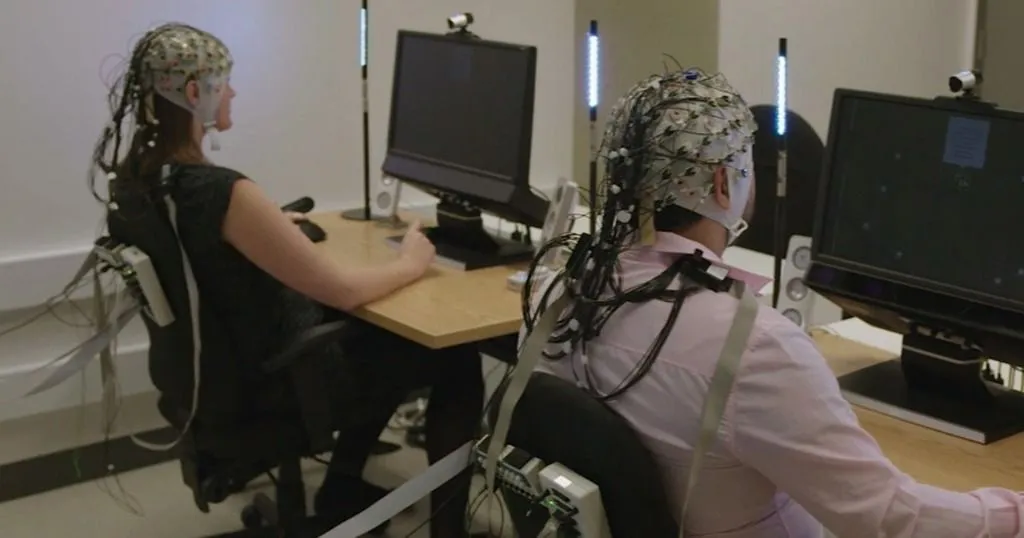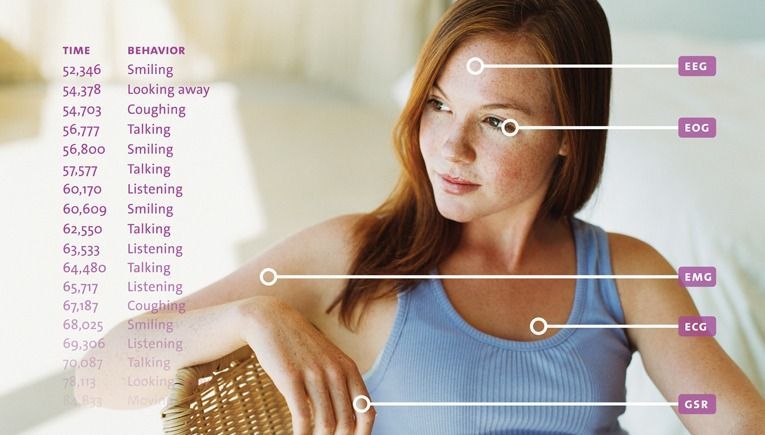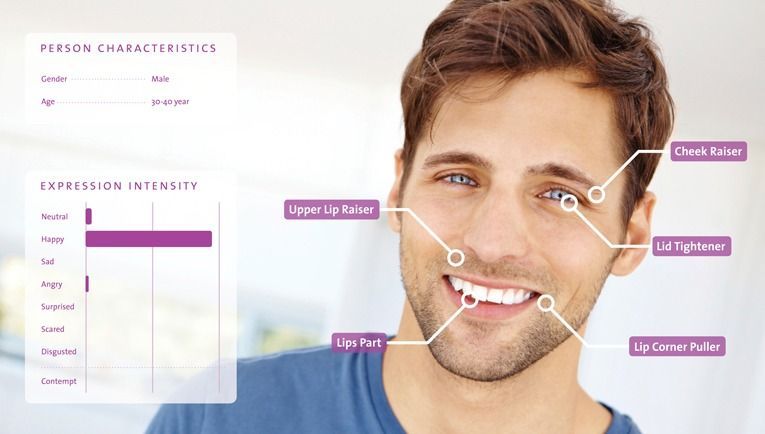What is biometric research?
Biometric research helps scientists uncover subconscious processes related to attention, cognition, emotion, and physiological arousal.
Posted by
Published on
Sun 18 Feb. 2024
Topics
| Data Integration | Emotions | Eye Tracking | FaceReader | Facial Expression Analysis | Heart Rate | Physiology | The Observer XT | Multimodal Research | NoldusHub |

Biometric research helps scientists uncover subconscious processes related to attention, cognition, emotion, and physiological arousal. While explicit behavior is often studied through interviews and surveys, implicit responses tell a deeper story: one that cannot always be captured through self-reporting.
What is biometric research?
Biometric research involves measuring physiological and behavioral signals to understand how people think, feel, and respond. It provides real-time data on subconscious reactions, helping researchers analyze emotions, cognitive workload, and physiological arousal.
These tools are now widely used in fields that study human behavior, including: psychology, educational research, UX research, and neuromarketing. Each biometric sensor provides different insight into human behavior: combining multiple sensors, researchers can gain a better understanding (and prediction!) of human behavior.
Different sensors to measure behavior
By using biometric sensors, researchers can measure physiological and behavioral signals, providing objective insights into how people react to different stimuli. Whether in psychology, consumer research, or neuromarketing, biometric research plays a crucial role in understanding human behavior.
Biometric research relies on specialized sensors to record various physiological signals, from facial expressions and eye movements to heart rate and brain activity. For example, when watching an advertisement or video:
- Your eyes follow the most engaging elements.
- Your facial expression changes based on your emotional reaction.
- Your hands may become sweaty, reflecting physiological arousal.
Each of these signals tells a true, unbiased story about how you’re feeling in response to a stimulus. This makes biometric research a powerful tool in fields like psychology, consumer research, and neuromarketing.
FREE WHITE PAPER: Data integration & visualization: mix and match
Download this white paper to learn:
- What kinds of data can be synchronized and integrated
- How to synchronize data
- How to visualize and analyze synchronized data
Why biometric research matters: quantify your results
Traditional methods like interviews and surveys rely on self-reported data, which can be influenced by social desirability bias or inaccurate recall. People may not always express their true thoughts or emotions, either consciously or unconsciously.
Biometric research goes beyond self-reporting, capturing real-time physiological responses that provide objective and reliable insights. By combining biometric tools with traditional research methods, scientists and businesses can gain a better understanding of human behavior.

Interviews and surveys study behavior and motives but not the implicit or “first moment of truth”. For example, think about socially desirable answers. Research shows that respondents are unable or unwilling to speak their mind and instead say what they think is more socially acceptable.
Key biometric research tools
Combine tools for biometric research with traditional methods and techniques - like interviews or questionnaires - in order to create a broader picture.
Eye tracking and facial expression analysis
Eye tracking shows where participants focus their attention, while facial expression analysis detects emotions. Combine the two to find out where the participant looked when frustrated, or, for example, what element in the video surprised the participant the most.
Perfect synchronicity is key to matching the measurement of attention or cognitive workload to emotions. This is especially useful in advertising and UX research.

Galvanic skin response (GSR)
When we experience something physiologically arousing (for example a roller coaster ride), you can feel your fingers tingle. GSR devices can detect this change in physiological arousal. Galvanic skin response measures changes in sweat gland activity, revealing the intensity of emotional arousal but not what the feeling actually is. Researchers often combine GSR with facial expression analysis or pre/post-experiment interviews for a more complete understanding.
EEG (Electroencephalography)
EEG measures brain activity, offering insights into cognitive engagement, workload, and motivation. It helps researchers understand whether someone is actively processing information, feeling focused, or disengaged. EEG is widely used in neuroscience, UX testing, and media research, but requires expert interpretation.
ECG (Electrocardiography)
Changes in your heart rate provide information about how you are experiencing your environment. If you feel anxious or excited, your heart rate will increase, and if you feel drowsy, your heart rate will decrease. Monitoring fluctuations between physiological excitement and behavior will help you gain insight into what is physiologically arousing and what is calming. For instance:
- Increased heart rate can indicate stress, excitement, or anxiety.
- Decreased heart rate may reflect relaxation or drowsiness.
The power of data integration
The true power of biometric research lies in combining multiple data sources. By integrating biometric signals with video recordings, interviews, and self-report surveys, researchers can build a more comprehensive picture of human behavior.
For example, in neuromarketing, combining eye tracking, facial expressions, and GSR can reveal:
- What caught the viewer’s attention?
- How did they emotionally react?
- Was the reaction positive, negative, or neutral?
This multimodal approach makes biometric research an invaluable tool for understanding human responses and to measure what people cannot always express in words. By tracking physiological signals like eye movement, facial expressions, brain activity, and heart rate, researchers gain a deeper, more objective understanding of how humans think, feel, and react.
When combined with traditional research methods, biometric data unlocks deeper insights, making it a crucial part of modern human behavior research.
Examples of biometric research
Prof. Julien Mercier from L'Université du Québec à Montréal (UQAM) is studying educational research. His lab is looking at refined brain information over time, involving the cognition and the affect of the learner.
Jean-Marc Diverrez, from bcom Institute of Research and Technology, France talks about measuring emotions. He hopes that the projects will go out of the lab and into the real world. He looks into all kinds of new technologies and sensors to better measure and thus understand emotions.
The Social Media Lab at the University of Louvain uses Noldus' software to integrate different data streams and set up experiments.
NOLDUSHUB: Your data in a heartbeat
Discover how NoldusHub benefits your research, and why it is the best multimodal platform for you to use:
- Clean and easy to use interface
- Synchronization from the start
- Powerful data visualizations
Related Posts

Analysis of facial expressions of emotions in children

Saying Ouch Without Saying It: Measuring Painful Faces
